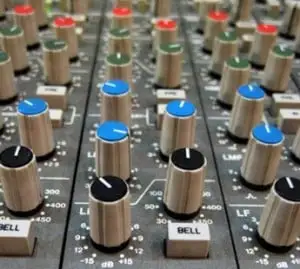The Non-Technical Approach To EQ
Feb 18, 2013We all know that EQ plays a critical role in getting a great mix, but might I submit that many of us are approaching the use of EQ in the wrong way? Almost daily I receive questions from readers in search of flow charts of suggested EQ moves for certain instruments. Why is this? Why do these people believe that a chart is going to help them with their EQ? What if I told you there was an easier way?!

Just Like Vocal Harmonies
I was watching another episode of the ever enlightening Pensado’s Place, in which Dave interviewed mix engineer Marcella Araica (Timbaland, Madonna, Pink). She said something about EQ that literally blew my mind:
I think I would drive myself nuts thinking numbers and frequencies. That does play a part in it, but for me it’s about accentuating the sounds. It’s like when singers sing their harmonies, you need to make sure [it’s] not going to rub up against another. I think [EQ] is the same way. – Marcella Araica, Mixer
What a genius analogy! You don’t have to be a classically trained vocalist to know when a harmony isn’t working. You simply can tell that some notes are colliding and there’s a friction or a tension in the track that isn’t working. You may not know what the solution is, but you know there is a problem. Time to try a new harmony. The same is true with EQ.
Identify The Problem
Here’s my non-technical approach to EQ. First you have to identify the problem (if there is one). Why reach for an EQ if you don’t have a reason? Author and mixer Mike Senior touched on this in our recent interview. Do you hear something you don’t quite like? Is there something “rubbing up against” your vocal that is making it sound flat and muddy. If the vocal sounds great in solo, but indistinguishable when the guitars are in the mix, then you have a problem with the guitars and the vocal. EQ can fix that.
This is how you should initially approach EQ, to solve a problem or make a track fit better in the mix. Don’t approach EQ because “you’re supposed to EQ.” Don’t start making EQ moves on a vocal just because your read a chart with suggested vocal EQ treatments or watched a video of mine saying the same thing. These are general suggestions that apply to many situations. But really they are only meant as a solution to a problem. If the track sounds fine, don’t touch it!
Discover Your Solution
Much like I talked about on before that we are conditioned as 21st century humans to look for the answers rather inquire, discover, and enjoy the process, we have no patience for the art. We only want a back of the book answer to make our mix sound great. This mentality leads to amateur questions like “How should I EQ vocals?” And no, I’m not picking on anyone here. I’ve done this (and do this) plenty of times myself. Like I just mentioned, we’re conditioned to look for answers.
In reality, no one can tell you technically how should EQ something. You must discover the answer to your specific track (and mix) in question, yourself. Just like with the vocal harmonies analogy, if you’ve noticed that something sounds off or out of place, it’s time to experiment with different frequencies to see if you can clear up the mess. The goal is to tweak and explore until the tracks no longer “rub up against” one another and you have more clarity. Simply put you want to be able to hear and feel every track clearly.
Take Things A Step Further
Now, lest you think EQ is only meant for “corrective” procedures, it is also an artistic tool that can help sculpt new sounds and enhance your tracks. So it’s not always about identifying and solving problems. Sometimes it’s about innovating tones and sounds for the sake of the song. Again, this process is aided by a non-technical approach.
Does it honestly matter to your listeners what 60hz sounds like? What about 6khz? No way. They just care about music, and so should you. If you want your snare to crack and it’s not cracking, then go on a hunt for whatever makes it crack. This too is a process of discovery, not an equation to solve.
It’s more art, and less science. It’s also more fun.
Discover The 6 Steps for Creating a
Radio-Ready Song from Scratch"
Enter Your Email Below To Receive The Free 17-page PDF,
"6 Steps To A Radio-Ready Song"
We hate SPAM. We will never sell your information, for any reason.

